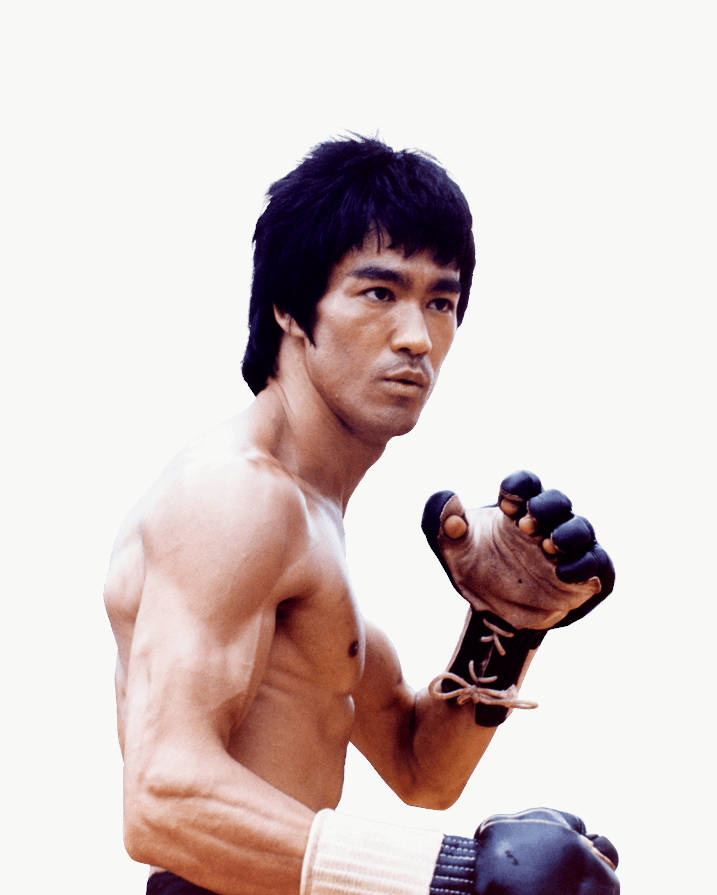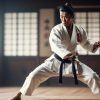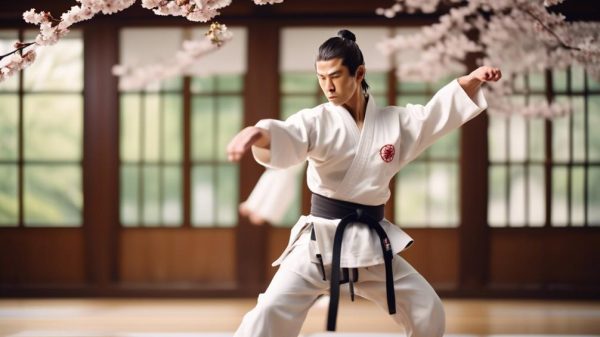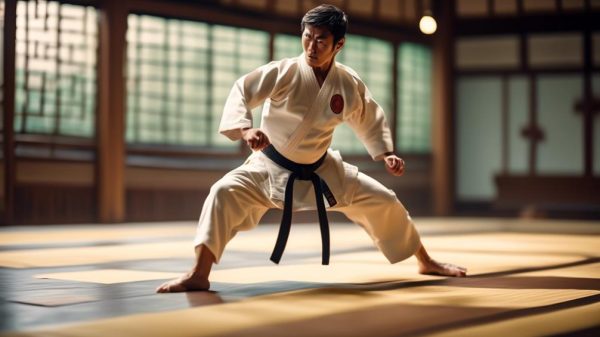Bruce Lee developed a unique martial art called Jeet Kune Do (JKD) blending Eastern wisdom with efficient Western boxing methods after restrictions he felt practicing only one style.
JKD techniques offer straightforward self-defense skills maximizing safety by aligning the body behind economical movements. Strategy stresses fluidity, control and personalized progress more than forcing rigid curriculum.
This article traces Bruce Lee’s inspirations pioneering JKD to disrupt martial limitations. Core philosophical principles promoting adaptability, practicality and self-expression underpinning the art also get spotlighted as his legacy.
Understanding JKD’s origins and formative theories lets appreciation bloom for Bruce Lee’s dedication to inclusive, customizable martial arts excellence reflecting timeless legitimacy.
Roots of Jeet Kune Do
In the 1960s, Jeet Kune Do emerged as a groundbreaking martial arts innovation by Bruce Lee, born out of his dissatisfaction with traditional martial arts systems.
Drawing from his Wing Chun training under Ip Man, Bruce Lee aimed to create a more adaptable and efficient combat approach.
At the core of Jeet Kune Do is the philosophy of ‘absorb what’s useful, discard what’s not,’ reflecting Lee’s belief in constant evolution and refinement of techniques by incorporating elements from various martial arts styles to craft a dynamic and personalized fighting method.
Bruce Lee’s divergence from the rigid structures of traditional martial arts signaled a shift towards a more fluid and intuitive fighting style.
Emphasizing interception and directness, Jeet Kune Do underscores the significance of responsiveness and adaptability in combat scenarios.
This philosophy highlights martial arts as a continuous journey of self-discovery and growth, urging practitioners to explore and integrate new techniques while staying true to their unique strengths and values.
Evolution of JKD Philosophy
The evolution of JKD philosophy illustrates a significant departure from traditional martial arts conventions towards a more adaptable and effective combat approach.
Bruce Lee’s dissatisfaction with the rigid structures of conventional systems led to a philosophy centered on absorption and adaptation, transforming the martial arts landscape.
Here are three fundamental aspects that characterize the evolution of JKD philosophy:
- Flexibility: JKD philosophy underscores the importance of being able to adapt and respond efficiently to any circumstance, echoing Bruce Lee’s belief in the fluidity of combat and life.
- Practicality: In contrast to many traditional martial arts that emphasize fixed forms and techniques, JKD philosophy prioritizes practicality and directness, seeking the most effective way to handle an adversary.
- Selective Assimilation: Bruce Lee’s principle of absorbing what’s beneficial and discarding what isn’t holds a profound place within JKD philosophy, urging practitioners to continuously evolve and refine their skills.
Principles of Adaptability
Adaptability is a core principle in Jeet Kune Do, essential for navigating diverse combat situations dynamically. In JKD, adaptability isn’t merely a skill but a guiding philosophy that shapes all combat techniques.
Bruce Lee’s analogy of being like water underscores the significance of flexibility and the ability to adjust seamlessly when faced with challenges.
The philosophy of adaptability in JKD encourages practitioners to continuously refine their techniques by embracing what works and letting go of what doesn’t, fostering a mindset of ongoing growth.
This principle empowers fighters to effectively respond to changing circumstances, enabling them to customize their strategies on the fly and outmaneuver their adversaries.
By honing adaptability in Jeet Kune Do, you develop a fluid and responsive approach to combat that can enhance your martial arts abilities significantly.
Influence on Martial Arts
Jeet Kune Do, founded by Bruce Lee, has had a profound impact on the world of martial arts, revolutionizing fighting techniques and philosophies.
Its core principles of adaptability, efficiency, and versatility have influenced various disciplines and inspired fighters to evolve their styles in modern combat sports.
Here’s how Jeet Kune Do continues to shape martial arts:
- Principle of Practicality: Bruce Lee’s emphasis on absorbing what’s useful and discarding what isn’t has resonated throughout different martial arts styles, urging practitioners to continuously refine their techniques and strategies.
- Interception Tactics: The concept of intercepting the opponent’s strikes to preemptively disrupt their attacks, a fundamental principle of Jeet Kune Do, has been embraced by MMA fighters to gain a strategic edge and dictate the pace of a fight.
- Personal Evolution and Expression: JKD’s philosophy of personal growth and constant evolution has encouraged fighters to break free from traditional norms, fostering the development of distinctive and innovative fighting styles that push the boundaries of combat sports.
Legacy of Bruce Lee
Bruce Lee’s lasting impact on martial arts and combat philosophy is evident in the enduring legacy of Jeet Kune Do.
His innovative approach to martial arts, centered on adaptability and personal expression, continues to shape combat disciplines.
Jeet Kune Do, developed by Bruce Lee, highlights efficiency, directness, and the constant pursuit of self-improvement.
This philosophy goes beyond physical combat, encouraging practitioners to embody adaptability and flexibility not just in fighting but also in their daily lives.
The legacy of Bruce Lee through Jeet Kune Do serves as a guiding principle for contemporary martial artists striving for excellence.
By diving into the fundamental principles of JKD, martial artists worldwide pay homage to Bruce Lee’s teachings and perpetuate his profound influence on martial arts philosophy.
The enduring legacy of Bruce Lee underscores the significance of his contributions to the martial arts community, establishing him as a true visionary in combat disciplines.









